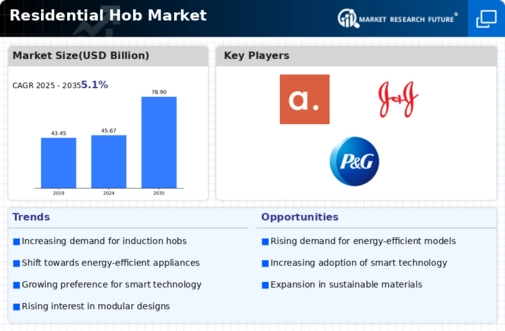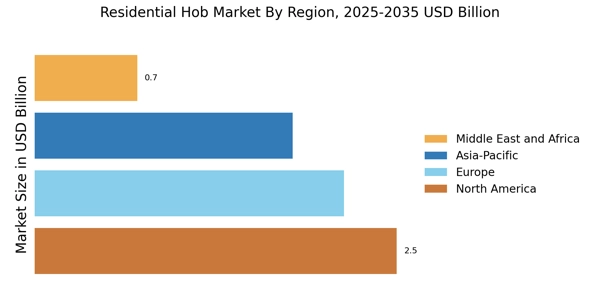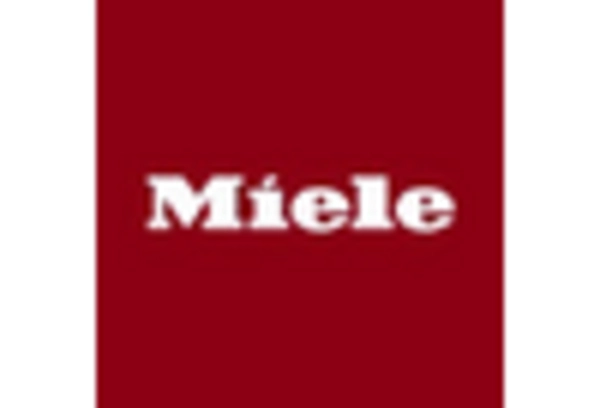Shift Towards Induction Cooking
The Residential Hob Market is witnessing a significant shift towards induction cooking technology. Induction hobs are gaining popularity due to their rapid heating capabilities and precise temperature control. Recent statistics suggest that induction hobs account for approximately 25% of the market share in the residential segment. This trend is driven by the growing preference for safer cooking options, as induction hobs do not produce open flames and are less likely to cause burns. Additionally, the ease of cleaning and energy efficiency associated with induction cooking further enhances its appeal. As consumer preferences evolve, the Residential Hob Market is likely to see an increased focus on induction technology, influencing product development and marketing strategies.
Sustainability and Eco-Friendly Products
Sustainability is becoming a central theme in the Residential Hob Market. Consumers are increasingly inclined to purchase eco-friendly products that align with their values regarding environmental responsibility. This trend is reflected in the growing demand for hobs made from sustainable materials and those that minimize energy consumption. Recent surveys indicate that a significant percentage of consumers are willing to pay a premium for environmentally friendly appliances. Manufacturers are responding by developing products that not only meet performance standards but also adhere to sustainability principles. As awareness of environmental issues continues to rise, the Residential Hob Market is likely to see a sustained focus on eco-friendly innovations and practices.
Rising Demand for Energy Efficient Appliances
The Residential Hob Market is experiencing a notable shift towards energy-efficient appliances. Consumers are increasingly aware of the environmental impact of their choices, leading to a surge in demand for hobs that consume less energy. According to recent data, energy-efficient hobs can reduce energy consumption by up to 30% compared to traditional models. This trend is not only driven by environmental concerns but also by the potential for cost savings on utility bills. Manufacturers are responding by innovating and producing hobs that meet these energy standards, thus enhancing their market appeal. As energy prices continue to fluctuate, the emphasis on energy efficiency in the Residential Hob Market is likely to grow, influencing purchasing decisions and shaping future product offerings.
Technological Advancements in Cooking Solutions
Technological advancements are significantly shaping the Residential Hob Market. The integration of smart technology into cooking appliances is becoming increasingly prevalent. Features such as touch controls, app connectivity, and automated cooking settings are appealing to tech-savvy consumers. Data indicates that the market for smart hobs is projected to grow at a compound annual growth rate of over 15% in the coming years. This growth is attributed to the convenience and efficiency that smart hobs offer, allowing users to monitor and control their cooking remotely. As technology continues to evolve, the Residential Hob Market is likely to see further innovations that enhance user experience and functionality.
Consumer Preference for Versatile Cooking Options
Consumer preferences are evolving towards versatile cooking options within the Residential Hob Market. Modern households are increasingly seeking hobs that can accommodate various cooking styles, from boiling to grilling. This demand for multifunctionality is prompting manufacturers to innovate and offer hobs that combine different cooking methods, such as gas, electric, and induction. Market analysis indicates that products featuring multiple cooking options are likely to capture a larger share of the market, as they cater to diverse culinary needs. As consumers prioritize flexibility in their cooking appliances, the Residential Hob Market is expected to adapt by introducing more versatile and multifunctional products.


















Leave a Comment